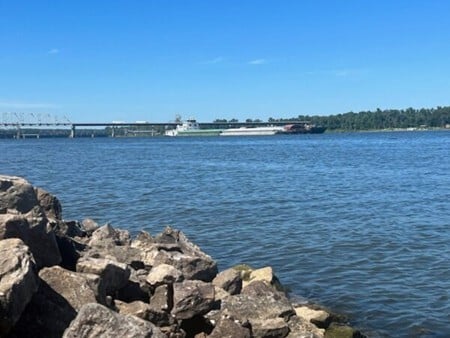In the last two weeks since UAW John Deere workers went on strike after rejecting a labor...
Ongoing Drought Impacting River Levels

The senior science fellow with Nutrien Ag Solutions says the ongoing drought across much of the eastern Corn Belt is impacting river transportation.
Eric Snodgrass told Brownfield Ag News, “Our biggest asset when it comes to agriculture in the Midwest, which is the Mississippi River, is now for the sixth year in a row below its low stage in late summer rolling into early fall.”
He says even though much of the western Corn Belt has seen more than adequate precipitation this summer, the lower Mississippi remains an issue.
“So, we’re worried about shipping grain out and bringing fertilizer up and all of these kinds of important things that the river does for us,” he says.
Snodgrass says the Ohio River also remains critically low in some areas, especially near Cairo, Illinois, with no real relief in sight.
EDITOR’S TAKE:
Mr. Snodgrass’ assessment is troublesome. He is correct that the Mississippi River and the Ohio River are used extensively to transport grain to gulf destinations and return loaded with fertilizer. River transport is typically the least cost mode and is quite efficient. Unfortunately, when drought conditions lower river levels, it slows traffic and often reduces payloads in either direction. That combination in turn raises costs. Not good news for commodities already under price stress. Worse yet, we can’t control the weather, make it rain and, hence, raise the river levels. What we can do, however, is remind farmers and ranchers that as a CAD member, you can offer special financing terms that match the cash flow of farmers and ranchers in your area to payment schedules by using CADFI.








